The Age-Specific Competencies and Patient Rights Training will educate healthcare providers (HCP) about care and communication strategies for patients of all ages.
Caregivers must have an adequate understanding of adolescent and young adult health. Adolescents and young adults make up 22% of the U.S. population.
Behaviors established during these developmental phases can have long-lasting impacts on health status and risk for disease. Adolescents and young adults are typically healthy, but health problems may start to occur.
What You’ll Learn
- Overview of adolescent health
- How to provide health services to teens
- How to improve communications with older patients
- How to discuss sensitive topics
- How to obtain medical histories of older patients
Details
Course length: 60 minutes; CME 1.00
Languages: American English
Key features: Audio narration, learning activity, and post-assessment
ACCME Accreditation
American Medical Compliance is accredited by the Accreditation Council for Continuing Medical Education (ACCME) to provide continuing medical education to physicians. Our Continuing Medical Education (CME) program is committed to enhancing the knowledge, skills, and professional performance of healthcare providers to improve patient care outcomes. Through high-quality educational activities, we aim to address the identified educational gaps and to support the continuous professional development of our medical community. American Medical Compliance designates this activity for a maximum of 0.75 AMA PRA Category 1 Credits. Physicians should only claim this credit for their complete participation in this activity.
Get Certified
American Medical Compliance (AMC) is a leader in the industry for compliance, Billing, and HR solutions. To become certified, please visit us at American Medical Compliance (AMC).
Explore our for other courses by AMC Course Library.
Patient Rights for Teens
Teens experience incredible growth and development during this phase of their lives. Therefore, they need regular medical care to ensure that they are safe and healthy. Healthcare providers need to establish trust with teens to provide adequate care in areas such as mental health and sexual health.
Parents can show that they trust their teenagers by allowing one-on-one time with providers. Having one-on-one time with a healthcare provider is extremely important. It allows adolescents to ask personal questions about their development and take greater responsibility for their health.
Communication with Older Patients
Good communication is a pillar of adequate healthcare. There are several benefits to effective patient-provider communication. For example, patients are more likely to adhere to treatment when they have a good rapport with their physician. Healthcare workers can increase patient satisfaction by using effective communication techniques. Additionally, there are more practical benefits to good communication. For example, it can help prevent medical errors on behalf of the physician. Also, the physician and the patient need to have a strong relationship. Effective communication can lead to this relationship, which can positively impact health outcomes for the patient.
Patient Rights – Hearing Deficits
Hearing loss is common in older patients. A significant proportion of people over 65 have a hearing-related disability.
This course describes some tips for improved communication for patients with hearing loss. For example, it is crucial to primarily ensure that the patient can hear to begin with. You can ask them if they can hear you or check for a working hearing aid. Also, excess earwax in the auditory canal can impede hearing.
Additionally, physicians must talk slowly and clearly when dealing with patients with hearing loss. It is important to maintain a normal, neutral tone.
High-pitched voices are very hard to hear. Therefore, doctors should avoid speaking in a high pitch whenever possible. Face the patient directly so that they can use your lips as visual cues. Also, keep your hands away from your face when talking. Excessive hand movements can be distracting and unnecessary.
Patients Rights – Visual Deficits
It is also common for older patients to have visual impairments. This training discusses how to provide adequate care while managing visual deficits.
For example, all spaces should have adequate lighting. This includes lighting on the physician’s face and person. Avoid glares from the sun whenever possible.
Talking About Sensitive Topics
When caring for patients, sensitive topics are often discussed. Many older people are reluctant to talk about certain sensitive problems, such as driving or urinary incontinence. Older patients also suffer from a variety of hidden health issues such as memory loss and depression. Addressing these problems can affect the safety and independence of the patient involved. Patients will likely try to avoid these topics, but clinicians must talk about them.
For example, it is important to voice concerns about a patient’s ability to drive. This decision can impact the safety not only of an older patient but of other innocent individuals on the road. Try to identify any health conditions, such as slow reaction times or vision impairments that may be a concern when it comes to driving. This course also examines other common sensitive topics, such as healthcare costs, end-of-life procedures, and elder abuse.
Patient Rights Suggestions
Physicians must have access to the medical histories of older patients. However, there are certain considerations when interviewing older patients about their medical history. For example, it might be easier to gather preliminary data before talking to the patient. This is more effective and efficient than relying on an older individual to provide accurate details regarding medical records.
Also, questionnaires should be structured in a way that is accessible for all patients. For example, it is good practice to only ask a patient to explain a situation once. This is because the process of explaining an illness can be tiring or traumatic.
Health Information
Healthcare providers must discuss medication procedures with older patients. These patients may not be aware of how to get their prescription medications or the side effects of such medications. Older people also are likely to take several different medications for a variety of conditions, such as cardiac conditions.
Therefore, the physician must identify all of the medications that a patient is taking prior to prescribing additional medicine. Family medical history is also an important component of a patient’s health information.
Family medical histories give in-depth backgrounds on patient experiences with illness and death. Additionally, it provides information regarding the likelihood of developing a condition and the health status of relatives.
Patient Rights Through HIPAA
Several patient rights are protected under HIPAA. For example, HIPAA’s Privacy Rule allows parents to have access to their children’s medical records. This course describes other patient rights considerations under HIPAA. These range from medical records in estranged situations to communicating with family and friends about medical records. All healthcare providers need to understand these applications of patient rights to be compliant with HIPAA.
Patient Rights Under the Affordable Care Act
Young adults in the United States are at greater risk of having insufficient health insurance. Therefore, practices such as the Affordable Care Act can help young adults. This act ensures that young adults have access to health plans and insurance despite their young age.



